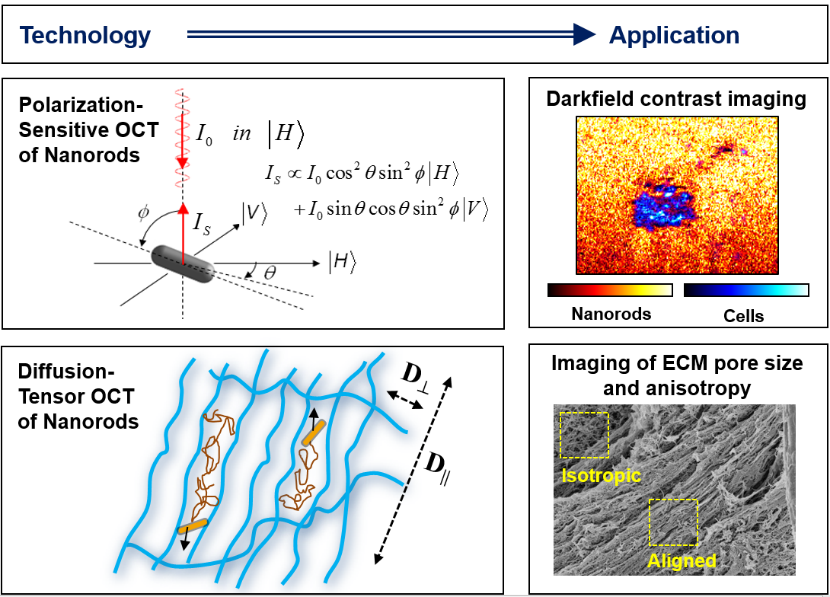Associate Professor Amy Oldenburg in Physics & Astronomy at UNC, in collaboration with Associate Professor Joseph Tracy in Materials Science and Engineering at NCSU, have recently been awarded a 3-year NSF grant to develop novel optical imaging tools and plasmonic nanoparticle probes for studying the nanostructural and mechanical properties of early-stage breast cancer.
Breast cancers form in stages; in many cases normal, healthy cells become pre-malignant but may or may not ever fully develop into cancer. One such pre-malignant state is called Ductal Carcinoma In Situ (DCIS). Whether or not DCIS cells develop into cancers is hypothesized to be affected by the micro-environment surrounding the cells. This includes collagen fibers that are part of an extra-cellular matrix (ECM). For example, collagen fibers surrounding aggressive tumors are known to become aligned, which is hypothesized to enable cancer cell migration and metastasis. How and when the ECM fibers become aligned, however, is not well-understood.
An ongoing problem with studying the breast tissue micro-environment is a lack of imaging tools that can assess these nanoscopic changes in the ECM. The Oldenburg-Tracy grant will address this technological gap by developing novel optical imaging methods and corresponding nanoparticle probes to measure changes in ECM structure; these changes are on a size scale that is normally only able to be resolved by techniques such as electron microscopy which are cumbersome and require killing the cells. Optical imaging studies will be carried out in 3-dimensional tissue models where DCIS cells grow into “organoids” that mimic the breast ductal structure, while embedded in an ECM-like matrix that is progressively restructured by the cells.
The imaging technologies will build upon techniques developed in Oldenburg’s Coherence Imaging Laboratory, in conjunction with nanoparticle synthesis methods developed in Tracy’s laboratory. In particular, the surface plasmon resonance offered by gold nanorods will be used to provide a strong optical signal that is polarization-dependent, allowing for measurement of nanorod diffusion (Brownian motion) within the ECM. As nanorods encounter ECM pores of different shapes and sizes, it restricts their diffusion, which will allow researchers to directly infer ECM nanostructure from the optical signals.


